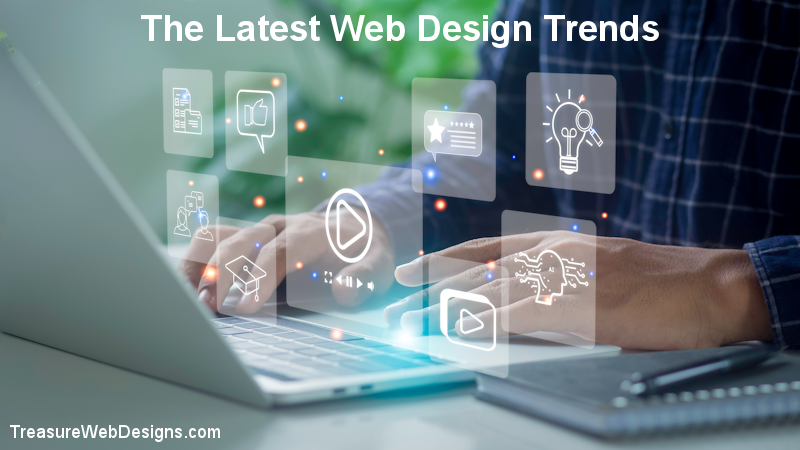 The Latest Web Design Trends: Crafting Engaging Online Experiences
The Latest Web Design Trends: Crafting Engaging Online Experiences
In the ever-evolving landscape of the internet, web design trends are constantly shifting and adapting to the needs and expectations of users. A well-designed website not only captivates visitors but also enhances their overall experience. As we dive into 2023, it’s crucial for web designers and developers to stay updated with the latest trends and techniques to create modern, user-friendly, and visually stunning online platforms. In this blog post, we’ll explore some of the prominent web design trends that are shaping the digital realm today.
1. Dark Mode Dominance: Dark mode has emerged as a prominent trend, offering a sleek and contemporary look to websites. Beyond its aesthetic appeal, dark mode reduces eye strain and improves readability, especially in low-light environments. It also allows vibrant colors and images to stand out, creating a visually striking contrast. Incorporating a toggle switch to enable dark mode enhances the user’s control and personalization over their browsing experience.
2. Minimalistic Design: Simplicity and minimalism continue to reign supreme in web design. Clean layouts, ample white space, and focused typography help eliminate distractions, allowing the content and key elements to shine. Minimalistic design enhances user navigation and emphasizes the essential aspects of a website. By employing a “less is more” approach, designers can create intuitive and engaging user interfaces.
3. Microinteractions and Animations: Microinteractions are subtle and functional animations that respond to user actions, providing real-time feedback and enhancing the overall user experience. From button hover effects to progress indicators, microinteractions add personality and interactivity to websites. Strategic use of animations, such as scroll-triggered effects or animated transitions, can captivate users and guide their attention throughout the site.
4. Asymmetric Layouts: Breaking away from traditional symmetrical grids, asymmetric layouts are gaining popularity in modern web design. These layouts introduce dynamic and visually appealing compositions that create a sense of uniqueness and creativity. Asymmetric designs can effectively highlight important content, draw attention to specific elements, and evoke a memorable experience for users.
5. Immersive Multimedia Experiences: Incorporating multimedia elements, such as videos, interactive graphics, and 3D animations, creates immersive experiences that keep users engaged. These elements are utilized to tell stories, showcase products, or present information in an interactive and visually compelling manner. With advancements in technology and browser capabilities, designers have more opportunities to incorporate multimedia seamlessly into their designs.
6. Mobile-First Approach: Mobile devices continue to dominate internet usage, making a mobile-first approach crucial in web design. Websites must be optimized for mobile devices, ensuring responsive layouts, easy navigation, and quick load times. Progressive Web Apps (PWAs) are also gaining traction, offering app-like experiences on mobile devices without the need for installation.
7. Voice User Interface (VUI) Integration: As voice assistants and smart devices become increasingly prevalent, integrating voice user interfaces into websites is becoming more important. Designing intuitive voice interactions and providing voice search capabilities enhances accessibility and accommodates users who prefer hands-free navigation. Voice integration is expected to shape the future of web design, revolutionizing the way users interact with websites.
Staying ahead of the curve in web design is vital for creating immersive and engaging online experiences. The trends outlined in this blog post reflect the industry’s current trajectory and offer designers and developers valuable insights into crafting modern websites. By incorporating these trends strategically, web professionals can create user-centric designs that not only delight visitors but also provide seamless functionality across multiple devices. Embracing innovation and remaining adaptable are key to ensuring your web designs stand out in the ever-evolving digital landscape.
